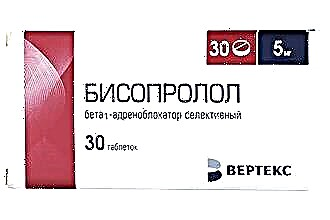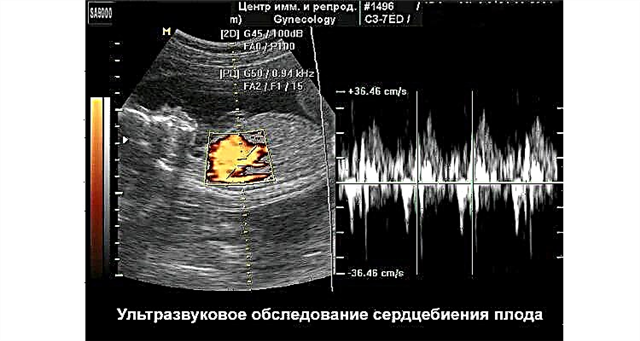With atrial fibrillation, the rhythm and sequence of excitability of the heart muscle changes, atrial fibrillation develops. On the ECG with atrial fibrillation, frequent contractions of the upper heart are visible, more than 300 per minute. This disrupts contractile function and leads to insufficient ejection of blood, which increases the risk of blood clots. With arrhythmias, a blood clot from the heart cavity enters the cerebral vessel with blood flow and leads to its blockage. Due to the risk of stroke and heart failure, fibrillation requires compulsory treatment, medication or electrical impulse correction.
How to diagnose atrial fibrillation by ECG
Fibrillation is characterized by a tachyarrhythmia-like heartbeat, rapid irregular pulse and heartbeat. Most patients experience chest tremors and weakness. A distinctive symptom is an inconsistent pulse. But sometimes atrial fibrillation is asymptomatic, and therefore an electrocardiogram is considered the standard method for detecting heart rhythm disturbances.
The main signs of atrial fibrillation on the ECG (photo. 1):
- in all 12 leads, P waves are not recorded, since impulses pass chaotically through the atria;
- small random waves f are determined, most often recorded in leads V1, V2, II, III and aVF;
- ventricular QRS complexes become irregular, there is a change in the frequency and duration of the R - R intervals, AV block is detected against the background of a low frequency of ventricular contraction - fibrillation bradyform;
- QRS complexes do not change, without deformation or broadening.
Figure 1: Example of an ECG with atrial fibrillation.

Arrhythmia is manifested by a rapid or slow contraction of the heart. Atrial fibrillation on an ECG is divided into two types:
- with a tachysystolic variant, electrocardiography reflects a heart contraction of more than 90 beats per minute (photo 2);
Figure 2: Tachysystolic AF.

- bradysystolic option - contractions of less than 60 beats per minute. (fig. 3);
 Figure 3: Bradystolic AF.
Figure 3: Bradystolic AF.
With arrhythmias, contractions arise from different parts of muscle fibers, ectopic foci, as a result of which there is no single atrial contraction. Against the background of hemodynamic failure, the right and left ventricles receive insufficient blood volume, cardiac output decreases, which determines the severity of the course of the disease. Decoding the cardiogram helps to establish the exact violation of the heart rhythm.
A characteristic sign of fibrillation on the ECG is f waves (large and small wavelengths):
- in the first case, fibrillation is determined by large waves, atrial fibrillation reaches 300-500 per minute;
- in the second, the flickering waves become small, reaching 500-700 per minute.
Atrial flutter - a variant of a slower contraction of the heart muscle, in the range of 200-300 beats per minute. Patients with persistent atrial fibrillation have frequent recurrences of atrial flutter. Such an emergency requires urgent medical attention.
Analysis of cases of paroxysms shows that, on average, in 10% of patients an attack of atrial fibrillation turns into flutter, what is determined on the ECG in the form of such a description:
- the absence of P waves and the replacement of small f waves by large sawtooth F waves is the main characteristic, which is shown in photo 4;
- normal ventricular QRS complexes.
Photo 4:

Types of atrial fibrillation and an example of a diagnosis formulation
Clinically, atrial fibrillation manifests itself in several forms:
- paroxysmal, when an attack of fibrillation lasts no more than 48 hours in case of successful treatment (cardioversion), or the paroxysm is restored in 7 days;
- persistent - arrhythmia lasts more than a week, or fibrillation can be eliminated later than 48 hours during drug therapy and electrical exposure;
- permanent form, when chronic fibrillation is not eliminated by cardioversion. Medication is ineffective in this case.
Given the heart rate data and signs of typical atrial fibrillation on the ECG, define three options for fibrillation:
- normosystolic form - heart rate within 60-100 beats per minute;
- tachysystolic - heart rate more than 90 beats per minute;
- bradystolic - heart rate less than 60 beats per minute.
The patient's clinical diagnosis includes the characteristics of arrhythmia and ECG data, which decipher: atrial fibrillation, persistent form, tachysystolic variant.
Basic principles of treatment
Modern therapy of arrhythmias is based on methods of restoring the heart rhythm to sinus and preventing new attacks of paroxysms with the prevention of thrombus formation. The provisions of the medical care protocol include the following items:
- antiarrhythmic drugs are used as drug cardioversion to normalize the heart rhythm;
- beta-blockers are prescribed to control the heart rate and the quality of contraction of the heart muscle (contraindication - patients who have a pacemaker implanted);
- anticoagulants prevent the formation of blood clots in the heart cavity and reduce the risk of stroke;
- metabolic drugs act as a stabilizer and improve metabolic processes;
- electrical cardioversion is a method of electro-impulse relief of an attack of atrial fibrillation. For this, atrial fibrillation is recorded on the ECG and defibrillation is performed under the control of vital signs. The only criterion for prohibiting such a procedure is severe bradycardia and a permanent type of fibrillation for a period of more than two years.
Complications of the disease
With atrial fibrillation, the upper parts of the heart are not fully filled with blood, thereby reducing output and developing heart failure.
WPW syndrome with early ventricular excitation provokes the development of supraventricular arrhythmias, worsening the course of the disease and making it difficult to diagnose cardiac arrhythmias.
In addition to a decrease in the blood filling of the cavities of the heart, the chaotic contraction of the atria forms clots and blood clots, which with the blood flow enter the small and large vessels of the brain. Thromboembolism is dangerous by the complete overlap of the arteriole and the development of ischemia, which requires resuscitation measures and the initiation of treatment as soon as possible.
Conclusion
The permanent form of atrial fibrillation significantly impairs the quality of life, leads to persistent hemodynamic disturbances, hypoxia of the heart and brain tissues. In case of arrhythmia, compulsory treatment is required, for which a consultation with a cardiologist is required.
An annual examination and regular electrocardiography will help to make a timely conclusion about a violation of the heart rhythm and prevent unwanted consequences.



